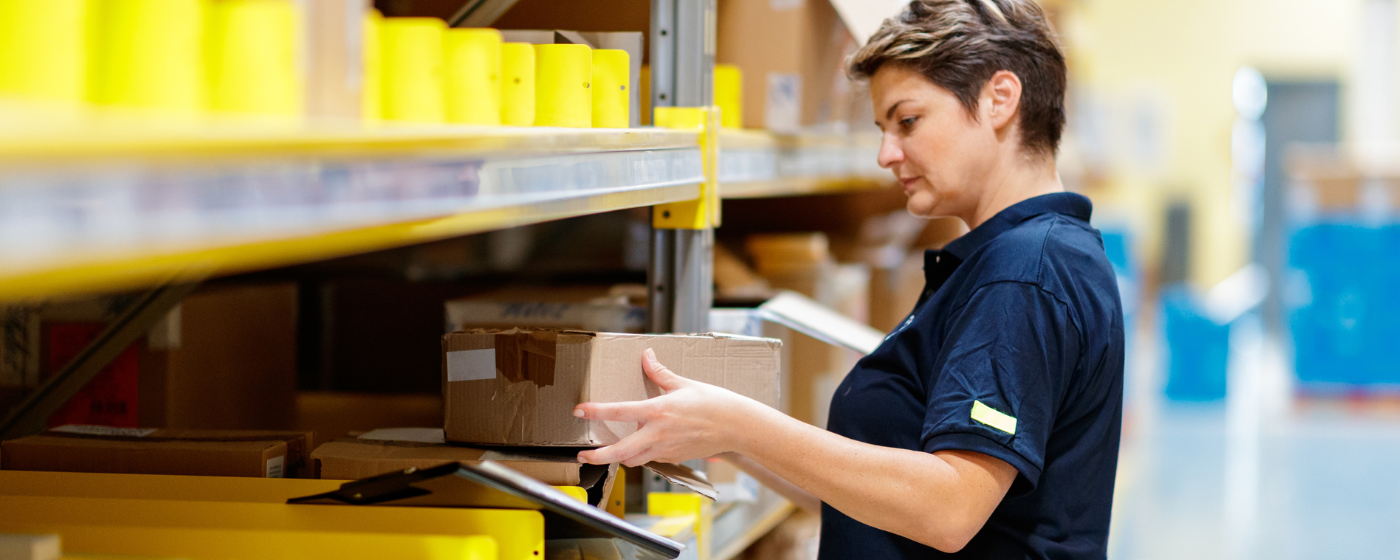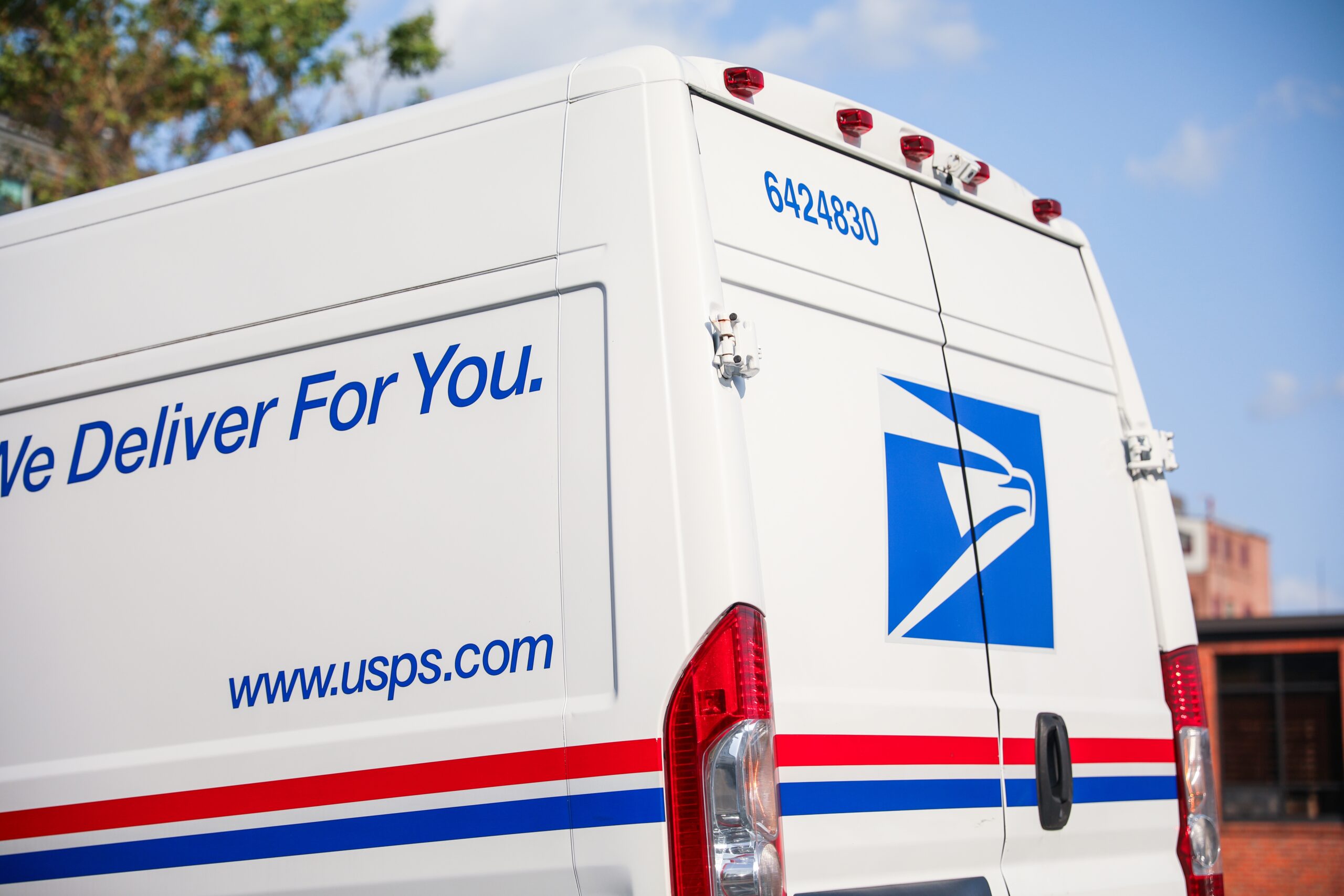Table of Contents
** Minutes
The order entry process explained
Overcoming common challenges in order entry
The future of order entry: trends and predictions
Every new order is a win for ecommerce brands. But before you start celebrating, you must make sure you process the order correctly – otherwise, you won’t see any revenue from it.
Each order comes with information: details about its contents, the customer that purchased it, their payment method, the shipping address, delivery specifications, and more. All of this data needs to be recorded through within a company’s order management system or ERP, so that orders get fulfilled correctly and customers are satisfied.
In this article, we’ll walk you through what the order entry process looks like for ecommerce brands, and how to streamline it for efficiency and accuracy.
What is order entry?
Order entry is the process of collecting customer information, validating payment, and confirming an order. It also involves tracking and managing orders, as well as generating invoices and other relevant documents.
When done correctly, the order entry process ensures that orders are accepted, fulfilled accurately and quickly, and delivered to the correct person in a timely fashion.
Why accurate order entry matters in ecommerce
The order entry process is relatively quick, but it’s absolutely crucial that ecommerce brands get it right. This is because accurate order entry:
- Reduces the risk of fraud: Ensuring that payment has gone through for each order helps protect you from accidentally getting scammed.
- Prevents costly mistakes: Ecommerce is a garbage-in, garbage-out system. If you enter an incorrect shipping address or the wrong contents details, your order accuracy rate will suffer and customers will be disappointed.
- Makes order tracking and order management easier: When every order is recorded correctly, you will have a much more accurate understanding of how many orders you have and how many inventory units have been sold. This visibility makes inventory accounting much simpler.
The evolution of order entry processes
While records of commerce transactions stretch back thousands of years, order entry processes have become a lot more sophisticated.
Before the invention of the internet, information collection and purchase recording was all done by hand, using a pen and paper. As you might imagine, this system was prone to human error, took a lot of time and effort to execute, and wasn’t able to keep up with ever-growing order volumes. With the invention of Microsoft Excel, businesses suddenly had a much more efficient way to log key order data.
As the ecommerce market began to grow, there was an increasing need for automation in order entry solutions – specifically, a need for programs that can automatically collect order information, process payments, and push orders to a brand’s fulfilment centres.
In the modern era, these software solutions are designed to make the order entry process seamless, and are often built into ecommerce logistics systems. ShipBob’s software, for example, automatically integrates with a brand’s ecommerce platform (like Shopify or BigCommerce) to capture order details and forward each order to the fulfilment centre closest to its destination.
The order entry process explained
The order entry process is multifaceted, but usually takes only minutes – or even moments. Here is a walkthrough of all that happens in that short amount of time.
Initial customer contact and order placement
The order entry process begins when the customer first engages with your website. To convert them, a brand should make it easy and seamless for customers to select their products, add them to their cart, and enter accurate information at checkout. Once a customer confirms their purchase and places their order, the next stages of the order entry process can begin.
Recording and validating order details
As soon as customer places an order, the business’s ecommerce platform or order management software will record relevant order details. These can include:
- Order number
- Customer name and contact information (such as mobile number)
- Product selections
- Item quantity
- Total cost (including shipping and taxes)
- Billing address
- Shiping address
- Estimated delivery date
Payment processing and confirmation
During payment processing, the correct amount of money is securely transferred from the buyer to the seller. Once the transaction is approved or a brand receives the funds, a payment confirmation is recorded and shared with the buyer.
Integration with inventory management
After an order is confirmed, a brand should update inventory levels as items in storage are allotted to the order.
Some brands do this manually, while others leverage an inventory management system to automatically readjust inventory levels in real-time. A good inventory management system integrates with your ecommerce platform so that as soon as a customer places an order on your website, your inventory software immediately notes what items were in the order and readjusts stock levels accordingly.
This automated approach to inventory management helps your brand know exactly how much of each SKU is available at any given moment, and avoid stockouts and backorders.
Order tracking and updates
From the moment a customer places an order to the moment it lands on their doorstep, you need to track the shipment and offer the customer regular updates. Order tracking, when done right, helps you satisfy customers and avoid losing packages in transit.
Finalizing and archiving the order
Once the order is delivered, you can confirm its receipt. Then, archive or file away the order details so that you can make room for new, open orders.
Overcoming common challenges in order entry
Like any supply chain function, order entry comes with challenges. Here are two of the most common issues that ecommerce brands face in order entry, and how to tackle them.
Addressing data entry errors
Perhaps your customer made a mistake, like entering a nonexistent shipping address. Perhaps you made a mistake, like typing an incorrect letter or number, or mistaking one product for another. Either way, even small data entry errors can cause huge issues – and cost you a lot in terms of customer satisfaction.
The best way to minimise data entry errors (and their impact on the order fulfilment process) is to implement an automated order processing workflow. This solution will pull a customer’s order details and information directly from your ecommerce platform, so you don’t have to input numbers manually and risk typos.
For instance, ShipBob’s software solution seamlessly syncs with major ecommerce platforms to automatically record each order’s data and bring that data into the fulfilment process. This not only frees you from inputting every piece of order data manually and in person, but also bridges the gap between order placing and order fulfilment.
Managing high order volume effectively
Manual order entry is hard enough – but when you multiply its issues by thousands and thousands of orders, it becomes practically impossible. For brands with high order volumes, it can be difficult to get order entry right even most of the time.
As a result, high-volume brands should seriously consider investing in an order management system (or OMS) – specifically, one that automates order entry. These solutions help you spend less time inputting every single order’s details (and worrying if they’re wrong), and instead manage order recording and tracking with ease. ShipBob combines an OMS and an IMS to create an all-in-one solution that you use to monitor their inventory, orders, and fulfilment from a single dashboard.
The future of order entry: trends and predictions
Gone are the days of spreadsheets and manual order data entry. To keep up with rising ecommerce demand, brands need an automated order entry system that can:
- Process orders across all sales channels, including B2B and social channels
- Integrate with the latest ecommerce tools, platforms, and partners for seamless logistics
- Scale with increasingly large order volumes
- Process orders in a matter of minutes, or even seconds
But more importantly, modern ecommerce brands will benefit from an order entry system that’s built into a single source of truth.
Because order entry is so connected to every subsequent fulfilment activity, it’s important for brands to manage it in conjunction with other functions, such as inventory management, procurement, fulfilment, and shipping. Having one platform through which you coordinate and monitor all these functions will help streamline your operations, and even make them more accurate and efficient.
ShipBob’s approach to streamlining order entry
ShipBob’s platform is designed to optimise the order entry process, so that your orders are confirmed quickly and accurately.
When you outsource fulfilment to ShipBob, you can integrate your ecommerce website platform (like Shopify, BigCommerce, WooCommerce, and more) with ShipBob. From there, you get to choose how you want to enter your orders into ShipBob’s platform. You can:
- Sync orders (DTC) automatically using ecommerce integrations.
- Sync orders (DTC) manually from your ecommerce platform.
- Import orders (DTC/B2B) by uploading ShipBob’s order import template.
- Create orders (DTC/B2B) one by one, manually, in your ShipBob dashboard.


ShipBob’s order dashboard also allows you to edit order details, so that you can nip typos, incorrect data, and other errors in the bud before they impact the customer experience. On each DTC order, you can adjust the:
- Recipient address/information
- Order items and quantities
- Shipping option
- Add insurance to order
- Assign Fulfilment Centre


From there, ShipBob’s algorithm assigns each order to the ShipBob fulfilment centre that is closest to that order’s end destination. By fulfilling the order from that optimal fulfilment centre, ShipBob helps you minimise shipping distance, cost, and times, saving you money and delighting customers with quick delivery.
ShipBob merchants can track every order from placement to delivery through the dashboard, as well as monitor inventory levels in real-time, glean insights from advanced order and inventory analytics, and even intelligently allocate their stock across ShipBob’s fulfilment centre network.
Integrate technology for enhanced efficiency
One of the best advantages of ShipBob’s solution is its connectivity. Our App Store supports dozens of integrations with major ecommerce platforms and tools and can fulfil EDI-compliant orders for 100+ retailers, so you don’t have to change your tech stack to use ShipBob. Our Developer API also enables brands to create custom integrations to achieve truly seamless logistics operations.
Real-world examples: ShipBob in action
ShipBob has helped thousands of brands improve order entry to benefit their operations.
For example, perfume brand Dossier leverages ShipBob’s dashboard to improve order visibility:
“I love that you can view orders based on when they are processing, completed, on hold, and in other stages. It is super helpful for us to have that and track the order every step of the way.”
Ines Guien, Vice President of Operations at Dossier
Wellness supplement brand Peak and Valley switched to using ShipBob’s automated B2B solution, and ended up saving a lot of time:
“We started out manually processing B2B orders through ShipBob, which worked for several months. A little while ago, we transitioned to ShipBob’s automated retail distribution powered by EDI using their SPS Commerce integration, and it was a game-changer. I wish we had opted for it from the start, because it made our fulfilment a lot more seamless.
I have one person on my operations team, and half of his job is managing all of our wholesale fulfilment. Switching from a manual B2B order flow to an automated one has saved him 6.5 hours in just the first month. With ShipBob automatically processing B2B orders, he’s free to focus on other priorities.”
Nadine Joseph, Founder & CEO of Peak and Valley
To learn more about how ShipBob can optimise your brand’s order entry and order management, click the button below.
Order entry FAQs
Below are answers to common questions about order entry.
How does ShipBob streamline the order entry process?
ShipBob’s order fulfilment software integrates with major ecommerce platforms, including Shopify, BigCommerce, WooCommerce, Magento, and Squarespace. This enables brands to easily sync, import, and create orders, manage inventory data, and speed up order processing.
What are the common challenges in order entry, and how can they be overcome?
Common challenges in order entry include:
- Order and customer data gaps and inconsistencies
- Difficulties manually managing order entry of bulk orders
- Delays in order processing
- Incomplete or poor integration with external tools (ERPs, CRM platforms, accounting software, and business process management solutions)
A good order management system, such as the one built into ShipBob’s technology solution, can help a brand minimise errors, speed up order entry and confirmation, and ultimately streamline their fulfilment operations.
What makes ShipBob’s order entry process unique compared to other providers?
ShipBob offers real-time visibility and order status tracking at each stage of the fulfilment process, so you can watch as an order is processed, picked, labelled, and shipped. ShipBob also allows you to edit an order up until a ShipBob team member starts picking that order, which boosts order accuracy and OTIF rates.






